Types of Irrigation Systems – Which to choose depending on your needs
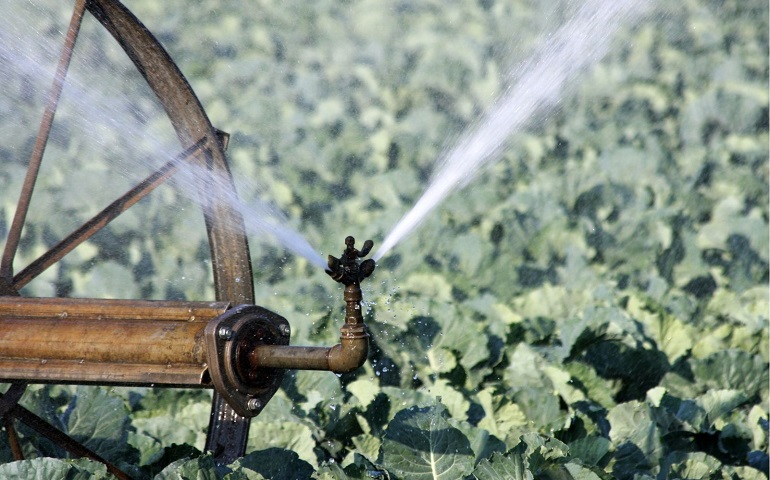
This post is also available in:
This post is also available in:
![]() Français (French)
Français (French) ![]() हिन्दी (Hindi)
हिन्दी (Hindi) ![]() Ελληνικά (Greek)
Ελληνικά (Greek) ![]() Português (Portuguese (Brazil))
Português (Portuguese (Brazil))
In farming, there is no one-size-fits-all approach. This explains why several irrigation systems are available in the market, each with its advantages and disadvantages. To make an informed decision that best fits your needs, a farmer should consider many different factors when choosing an irrigation system to improve irrigation efficiency. Here are the most common irrigation systems widely used by farmers.
1. Sprinkler Irrigation – Overhead irrigation
Sprinkler systems are suitable for large-scale farming operations. They consist of a network of pipes and sprinkler heads that distribute water to crops, often in a circular pattern. Sprinklers also come in different types; center pivot, linear move, traveling gun, and permanent or solid set, designed to suit specific farming operations.
Pros:
- Efficient for large-scale irrigation.
- Availability of different types of sprinklers such as rotary, spray and impact.
- Can be programmed to water automatically.
- Can be used to apply fertilizers or pesticides.
- Useful for yield and crop quality improvement.
Cons:
- High water use.
- More maintenance is required to prevent clogging and ensure the system is operating effectively.
- More susceptible to wind, which can cause uneven distribution of water.
- Not suitable for tree crops or fields with large slopes
- Higher costs (for installation and maintenance)
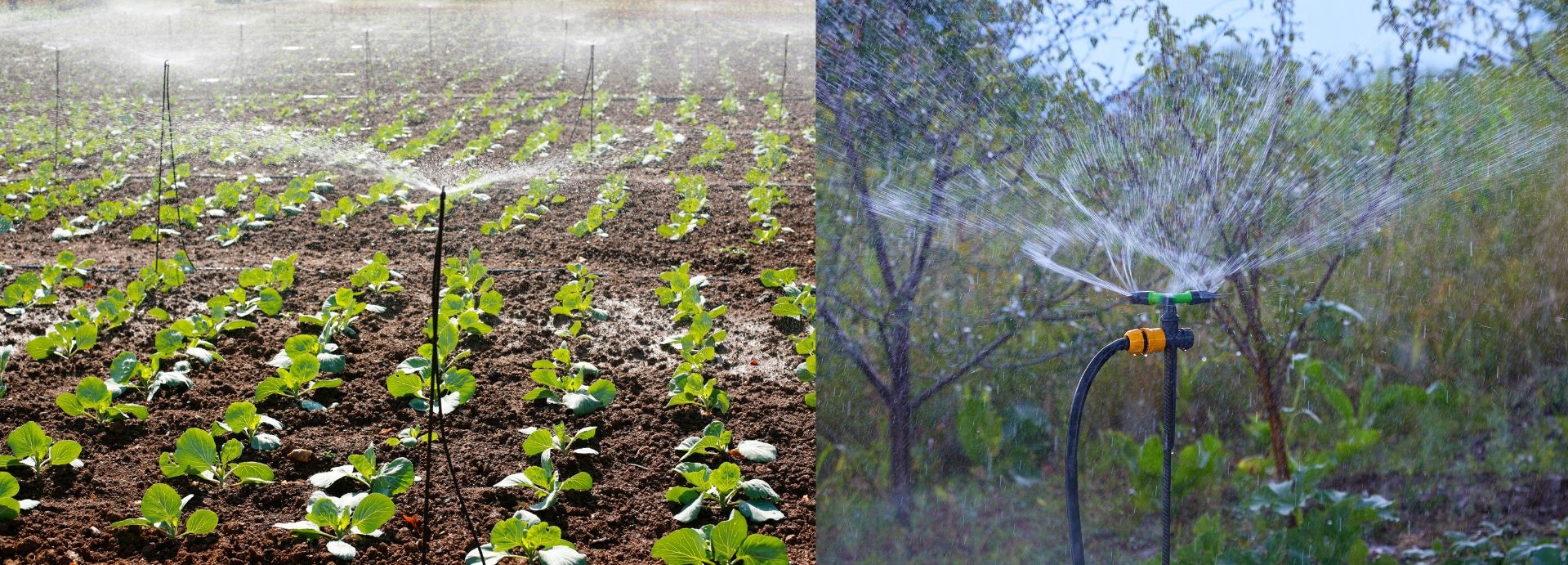
a. Center Pivot Irrigation
The center pivot irrigation system is a widely used type of sprinkler system. In this system, an irrigation unit moves circularly. The system delivers water uniformly across crops by a spray or bubbling system from nozzles mounted on a frame. The width of the area irrigated every time, as well as the speed of the rotation and the amount of water applied, depends on the system and its components-accessories used. The unit can be relocated either manually, using a tractor, or with an electric drive system. In these systems, the farmer can use low (10-30 psi operation pressure), medium (operating at 30 and 60 psi) or high (with more than 60 psi) pressure sprinklers.
Pros:
- Ideal for large-scale irrigation.
- Improvement of crop quality and quantity.
- Mitigation of soil erosion.
- Suitable for linear, square, or rectangular fields.
- Ability to automate systems to cover large areas rapidly.
Cons:
- Generally expensive to install.
- More maintenance is required with high-cost equipment
- High energy consumption
- Not that suitable for fields with irregular shapes (some parts of the field may receive uneven irrigation.
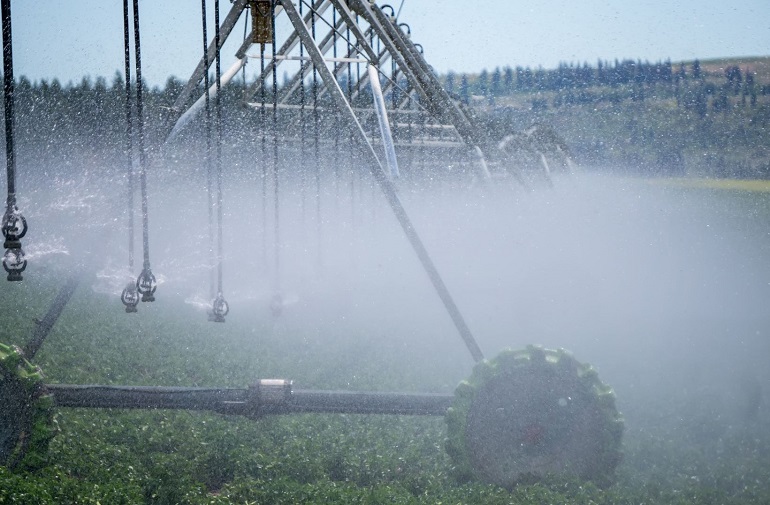
b. Traveling Gun irrigation system
In a traveling gun irrigation system, a large water gun is mounted on a wheeled cart or another vehicle that is able to move along the length of the field being irrigated. The water gun is connected to a water supply line and propelled by the force of the water being ejected from the gun.
Traveling gun irrigation systems are highly efficient and effective for watering large areas of crops, including fields with uneven terrain or varying crop heights. The system is capable of covering large distances and can be used to irrigate fields of varying shapes and sizes.
Pros:
- Highly effective in delivering irrigation water to a large area of crops, including fields with uneven terrain or varying crop heights.
- The system is highly efficient regarding water usage as it reduces water wastage by delivering water directly to the crops.
- The system can be modified to accommodate fertilizers, herbicides, and insecticides, reducing the cost and workload of using separate spraying equipment.
- The system is highly portable and can easily be moved around the farm.
Cons:
- The cost of installing a traveling gun irrigation system can be high, which can be a barrier to entry for some farmers.
- Traveling gun irrigation systems require regular maintenance checks, which can be costly and time-consuming.
- Windy conditions can affect the system’s effectiveness, leading to uneven coverage and water wastage.
- In areas with vulnerable soil, high water pressure from the gun can lead to soil erosion, which can cause long-term damage to the field.

2. Types of Micro-irrigation systems
a. Drip Irrigation Systems (Trickle irrigation)
A drip irrigation system delivers water directly to the roots of crops, thus increasing efficiency and minimizing water waste. The system involves a network of (plastic) tubes (pipes) or hoses and emitters or drippers that release water directly to the base of the crop at very low rates (2-25 liters per hour). In this case, the irrigation tend to be more often compared to the sprinkler systems. Drip irrigation is preferred to be used in high-value crops (e.g., vegetables, vines)
Pros:
- Efficient in water usage as it targets only specific spots where water is needed.
- Can be used for fertigation as well (application of fertilizers through the irrigation system during an irrigation session).
- Reduces nutrient leaching and soil erosion, maintaining soil quality.
- Saves up to 60% of water use
- Suitable for row crops and also for orchards and vineyards.
- Highly effective in reducing plant stress and disease (related to high moisture on the plants’ canopy or the transmission of soil-born pathogens)
- Can be used in soils with high salinity to decrease the problem
Cons:
- More expensive to install than sprinkler systems.
- High maintenance requirements to avoid clogging, leakage, and root blockage. Blockage of the emitters is one of the most common problems a farmer may face when using drip irrigation.
- Tendency to cause salt build-up in the soil around the dripper (wetted area), which can be detrimental to crops when not monitored.
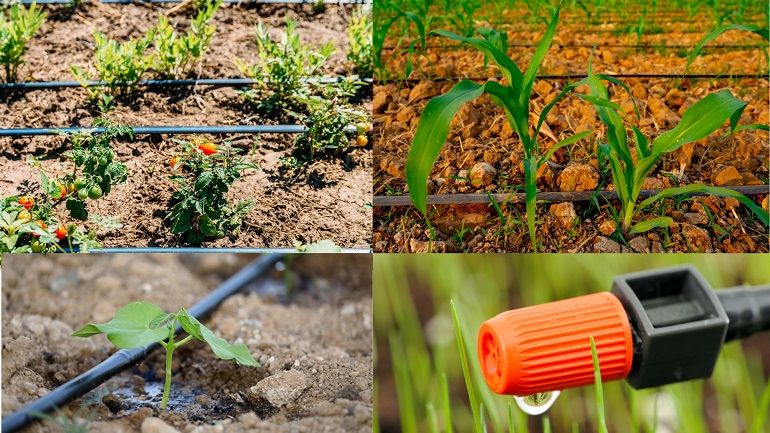
b. Micro-Sprinkler Systems
They are also considered efficient and precise irrigation systems with many advantages to drip irrigation. However, micro-sprinklers may better fit sandy soils since they offer less leaching and better water distribution in the root system. It is successfully used in peach or citrus orchards with sandy soils, but many vegetable farmers also prefer them.
c. Soaker hoses
Soaker hoses function similarly to drip irrigation, providing water directly to a plant base, but are typically made of porous rubber or plastic material that seeps water instead. These systems are ideal for garden beds, shrubs, and trees.
Pros
- Highly efficient water use
- Gardens stay moist for longer periods.
- Less evaporation and runoff than sprinklers.
- Can be customized to fit specific areas.
Cons
- May require extra monitoring to prevent over-watering.
- Can be prone to clogging.
- Need to be replaced every few years.
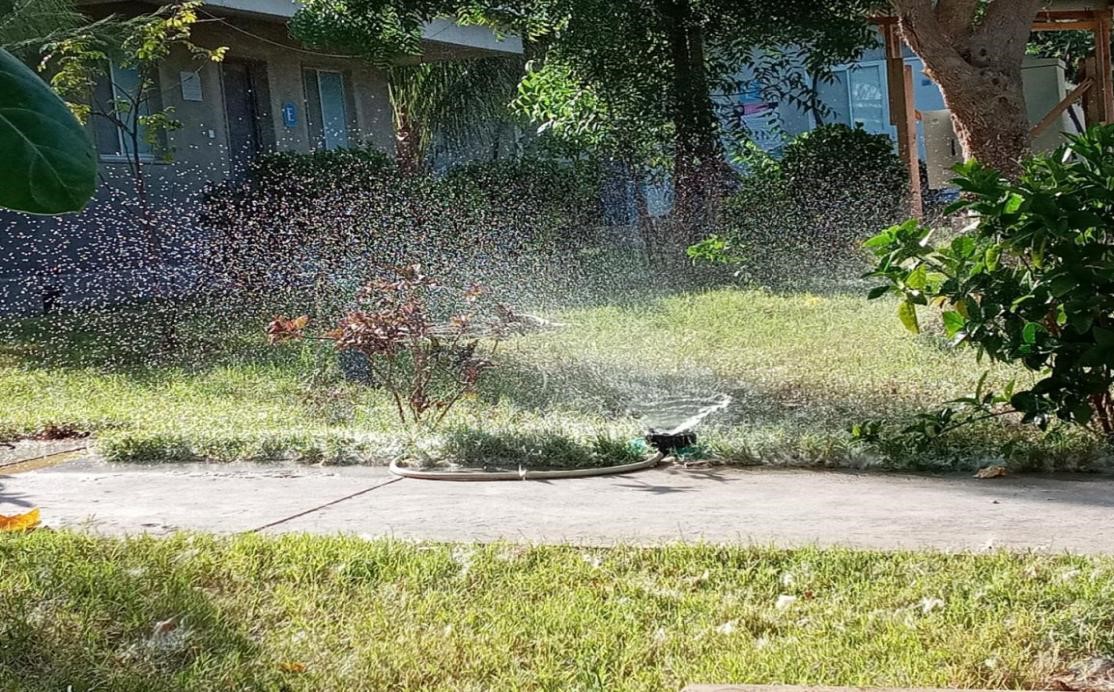
3. Surface Irrigation
There are e main types of surface irrigation: the basin, the border, and the furrow systems.
All these systems involve flooding and furrow irrigation of fields with water. This system delivers water to the crop fields through channels, basins, or furrows. While it is a cheap irrigation system, it requires even and well-leveled land as well as high water availability.
Pros:
- Suitable for large-scale irrigation.
- Cheap irrigation systems.
- Low maintenance.
- Appropriate for undulated land
Cons:
- Requires a lot of water as most of the water is lost by evaporation.
- Inconsistent water delivery across crops.
- Susceptible to soil erosion and nutrient leaching
- Not suitable for fields with slope (above 3%).
- The farmer needs to be extra careful to avoid water-logging and excessive soil moisture that may lead to anaerobic conditions in the root zone leading to root rot.
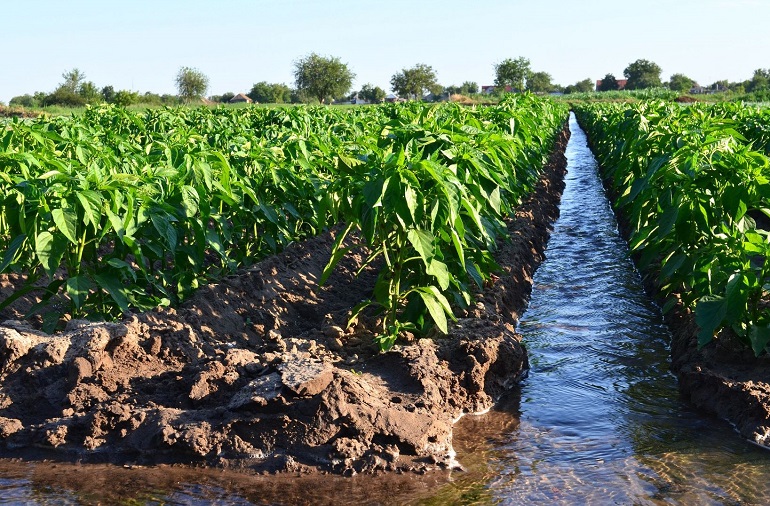
How to improve the efficiency of surface irrigation
Surface irrigation is considered a system of generally lower efficiency compared to the previously mentioned systems, more precise solutions. However, in many cases, high efficiencies have been achieved when applied with extra care.
There are several ways to improve the efficiency of surface irrigation:
- Efficient leveling of the field,
- Using plastic or concrete canals (instead of earthen to reduce water losses due to seepage),
- Using PVC or low-pressure aluminum pipes.
- Knowing the crop water requirements and characteristics to adopt the irrigation regime.
- Use of high-quality water (low salinity).
- Designing a system to capture and reuse the runoff water.
- Use of technologies to help increase water management precision.
Read more regarding the Factors to Consider When Selecting an Irrigation System.
Irrigation Management – How to Optimize Irrigation Efficiency
Innovative Technologies in Irrigation: The Present and Future of Water Management
Reference
- https://citeseerx.ist.psu.edu/
- https://www.ripublication.com/ijaar19/ijaarv14n1_06.pdf
- https://academicjournals.org/journal/IJWREE/article-full-text/A557E9051547
- https://books.google.fr/
- https://agrilife.org/itp/files/2018/05/BUL247.pdf
- https://www.fao.org/3/s8684e/s8684e07.htm
- https://anrcatalog.ucanr.edu/pdf/8447.pdf
- https://krishi.icar.gov.in/jspui/bitstream/123456789/28189/1/Special%20Issue%20kkm.pdf
- https://extension.uga.edu/publications/
- https://extension.okstate.edu/








































































